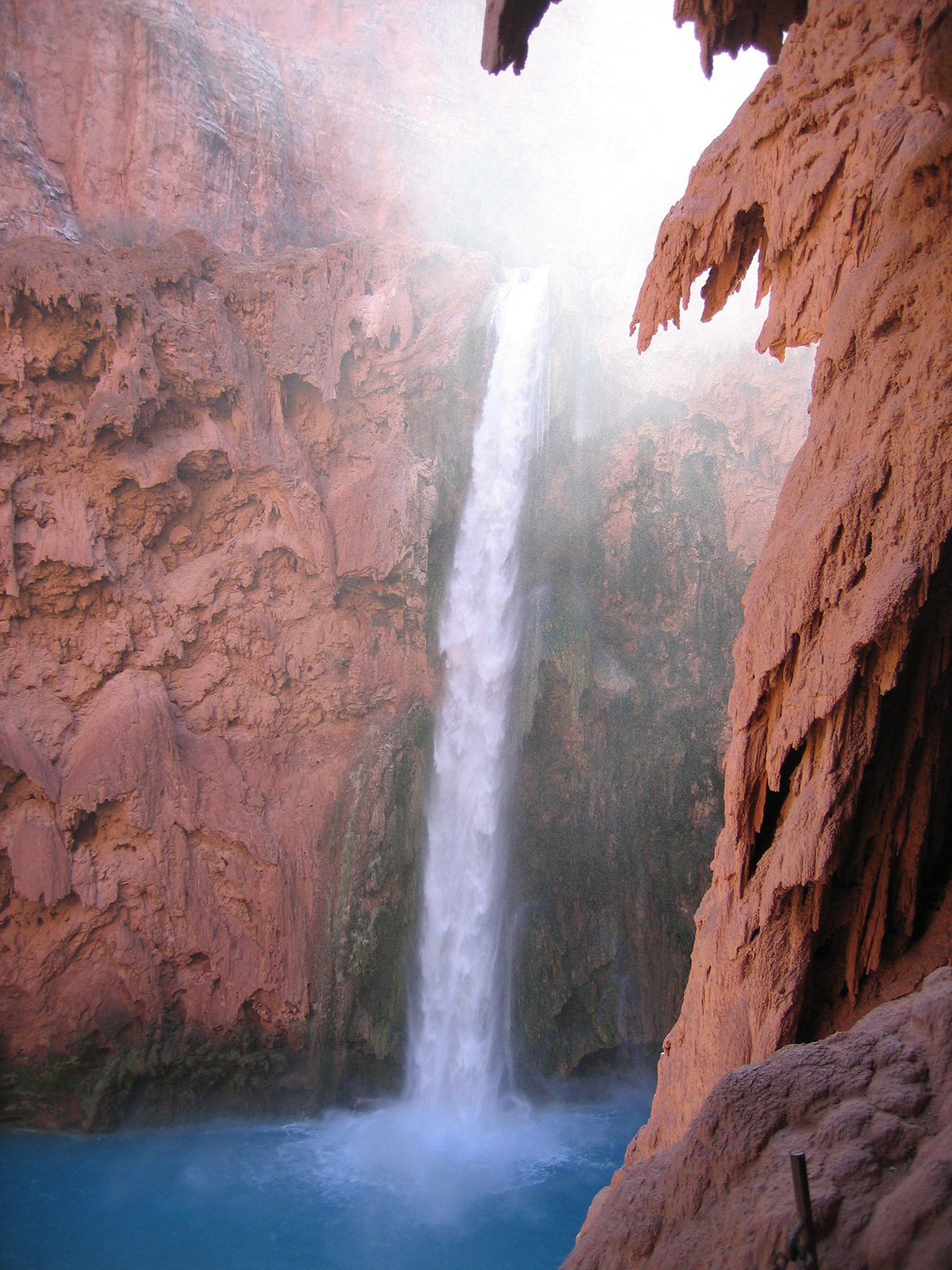Waterfalls are the coincidence of water, earth, and air. They can vary in size both height-wise and volume-wise, but they always have something special about them. The water comes upon the brink and then plunges. Perhaps it is just that the water seems more alive in a waterfall than anywhere else, yet it is unharmed however far the fall. Perhaps, it is that falling water creates ozone, which I find to be pleasant smelling. Perhaps, the sound of falling water is soothing. The sound of water falling to a person who grew up in the desert is miraculous. It signifies that there is an oasis nearby, one that not only gives water but has such strength to even flow and fall above ground when all else is devoid of water. A ribbon of white appears. It can be a trickle or a torrent. It can plunge of crimson bluffs or a sculpted marble wall. It can leap and bound or freefall. It can have its own travertine domes and features that have been the accumulation of millennia and host biomes unique in all the world. Waterfalls almost always fall into a pool which brings welcome relief to the weary hiker. It sculpts out a bowl that seems nature’s own scrying glass, and by descending into that pool you might get a glimpse of the fates. The depth of the pool reveals the clarity that all water has inherently if it is shallow, but if it is deep, it creates a stained glass artwork defined by physics and chemistry and adorned by rocks, shadows of plants, and the varying depth of the pool itself. The mists rising out of the pool can conceal the base of the waterfall in mystery. Who knows what dragons may lurk therein? They can also create rainbows and show off all the colors of nature we are privy to. The largest waterfalls create their own thunder. The smallest, a bare trickle, lighter than rain. A waterfall that is tall can vanish into its own mist, barely reaching the ground. Or, as I have heard tell of Angel’s Falls, never reach El Canyon del Diablo below. If the slope of the cliff where a waterfall resides is not over 90%, the cascade can become a wild panoply of leaping and bounding dragons. Each bound creates its own small waterfall in a grand network, and each can be appreciated in its own right before taking in the cataract as a whole. I prefer to watch waterfalls in two ways. One is to look at the entire waterfall and let your vision zoom out. The coordinated movement of millions of droplets of water give the waterfall a paradoxically static appearance as the same ripples and gushes appear continuously in nearly the same place. The entire scene is one of peace. The other way to watch a waterfall is to train your eye on one single droplet or gush of water and track it as it plummets from cliff to pool. Then, train your eye again on the top, and you will soon have a true appreciation for the speed and motion of water in freefall. Likewise, you can look at a waterfall from near of far. Too close and the mists may blind you, but too far and you will lose the magic of its sound. Somewhere in the middle of this spectrum is a view that allows you to see and hear a majority of the waterfall and rejoice in every leap and splash.

Ode to Waterfalls
by
Tags: